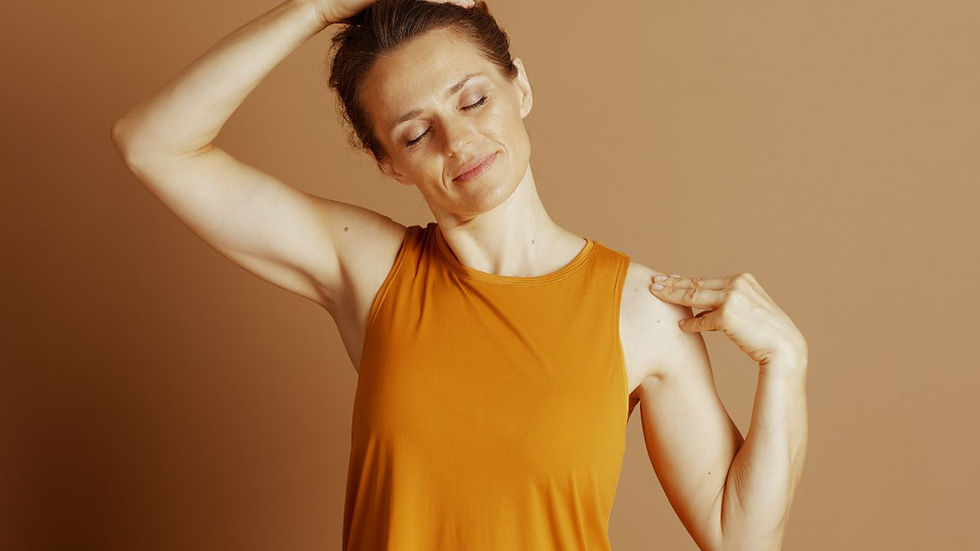Strong Hips Help Eliminate Low Back Pain
- Ken Belveal
- Jan 3, 2023
- 2 min read

How weak hips affect posture and pain?
For this article I’m focusing on the hip abductors, the muscles that allow you to

move your foot to the side away from the other foot, and more specifically the gluteus medius muscle. This muscle originates from the hip and inserts on the top of the femur (thigh bone).
There has been a large amount of research on the relationship between the ability to move and weakness of the gluteus medius and a correlation has been found with pain in the:
Lumbar spine
Hips
Knees
Ankles
It’s also been correlated with functional valgus (knees bow in when walking or sitting) and the potential risk of ACL injury of the knee.
When the gluteus medius muscles are working properly they maintain optimal length/tension of the muscles of the core. They also ensure optimal alignment and better contact between the femur and the lower leg spreading the load of the body evenly like proper wheel alignment wears tires evenly. This proper alignment is a result of all the muscles working evenly preventing compensation and the resulting pain.
The main functions of the gluteus medius:
Stabilizes the hip acting to keep the hips level when viewed from the front.
Helps decelerate hip flexion, adduction and internal rotation essentially slowing the forward motion of the thigh right before the heel strike during walking.
Stops depression of the opposite hip thus preventing undue pressure on the lumbar spine.
How to tell if you have weak gluteus medius muscles
You’ll need a full-length mirror for these tests:
Put your hands over your head with your elbows straight then squat down as far as you can comfortably. If your knees bow in or your hips shift to one side that’s a positive test for weakness.
During a single-leg squat your knee bows in.
Single-leg stance the opposite hip drops down.
What to do to strengthen the gluteus medius muscles:
Clamshells
Lie on your side with your back up against a wall (this prevents pelvic rotation)
Bend both knees and hips approximately 60 degrees
Separate the knees while keeping the feet together and hold for a couple of seconds
Perform 1-3 sets of 12-20 repetitions
This exercise can be progressed by adding an exercise loop above the knees
Side-lying leg raise
Lie on your side with your back up against a wall (this prevents pelvic rotation)
Bend the bottom knee
Straighten the top knee and pull the toes to the knee
Raise the straight leg up the wall while keeping pressure against the wall and hold for a couple of seconds
Perform 1-3 sets of 12-20 repetitions
This exercise can be progressed by adding an exercise loop above the knees
Exercise loops are a great way to progress these exercises but they can be uncomfortable due to binding, slipping and tension. To make them more comfortable and for you to get the most out of them, Stand Up Str8 has invented Resistance Loop Band Covers. Check them out and get those hips strong and live pain-free!
Enjoy!








Comments